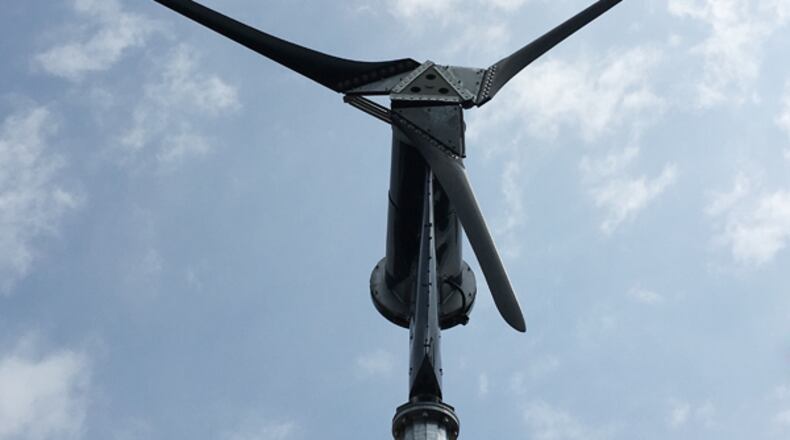Located on the grounds of UD’s River Campus, in the campus south parking lot, in a half-acre fenced-in area, the 25,000-square-foot center has wind turbines, solar panels, a portable generator, AC motor control centers and advanced batteries for energy storage.
MORE: Payday lending creates a 'horrible cycle' for too many Ohioans
“We envision the Energy Experience Center to eventually be a showcase of best-in-class technologies in energy generation, storage, controls, efficiency, cyber-security, monitoring and load management,” Eric Lang, a senior research scientist in UDRI’s Energy Technologies and Materials division, said in a statement. “The generous donation by OGW will play an important role in helping us reach that goal.”
Micro-grids are small, self-contained energy storage and generation facilities designed to supply power to users nearby. They can be connected to one of the major commercial grids that supply energy to most of the nation, but they can also operate independently if the larger grid is compromised.
MORE: When you make a billion SlimJims a year, you have to be efficient
UDRI said its micro-grid is designed to generate its own power, and advanced batteries will collect and store extra energy produced by solar panels and wind turbines to provide DC power when sun and wind are scarce.
The center also features a dedicated connection to the local Dayton Power & Light commercial grid, which supplies electricity for tests requiring extra power. The center also feeds power back to the DP&L grid when its various generators are producing more power than is being consumed by the center.
Lang said predicted that in the future, more power will produced and stored in micro-grids close to the site of consumption, and less from conventional centralized power stations.
He believes micro-grids can also strengthen national security.
Right now, our national grid is divided into three major zones, Lang said in an interview Monday. Key nodes in that grid, if they were taken out, could compromise the entire grid, he said. A micro-grid can continue operating even if the main grid is weakened or cut off.
Micro-grids in that situation could power hospitals, universities and defense installations, for example, even if the main grid were down or damaged.
“People are starting to have more and more micro-grids for those reasons,” Lang said.
The donated wind turbine will be pushed not by wind, but by an electric motor, he said. It will be used for test purposes “rather than waiting for the weather” to create desired test conditions, Lang said.
About the Author

